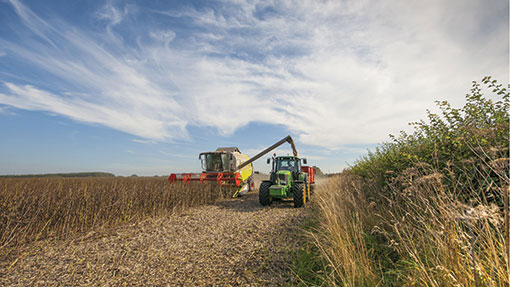Spring pulse seed set to be in short supply

Spring pulse seed could be in short supply this season as growers look to pea and bean crops to satisfy new European Union greening requirements.
The rise in demand is likely to be exacerbated by a void left in the UK arable area, with the oilseed rape crop set to be down by more than 70,000ha due to falling prices and pest damage coupled with an imminent fall in the sugar beet area.
This could leave an estimated 100,000ha of arable land looking for a new use, and pulses are proving a popular option to fill the gap, with stocks of spring pulse seed selling much sooner than previous seasons, according to merchants.
Andy Bury, national pulse trader with agricultural supplier Frontier, estimates the spring bean area will see the biggest leap and could rise by as much as 30%, reaching nearly 100,000ha.
“Spring beans have performed very well this year, averaging about 5t/ha. It received a lot of interest, so I think spring bean seed could be tight,” he says.
Chris Guest from Gleadell Agriculture says pulse seed supplies are unseasonably low, and some growers opting for a spring option may be left disappointed.
“We’ve seen an increased demand and very early sales, with the vast majority of our spring pulse seed already sold out,” he adds.
“The CAP announcement at the Cereals event really sparked a lot of interest. We normally wouldn’t have sold so much now, and would have still have had some left closer to planting in January and February,” Mr Guest says.
Growers can switch to growing pulses to help comply with new EU greening rules and so allow them to qualify for the new Basic Payment Scheme subsidy (see p46).
Mr Guest points out the variety Vertigo has offered a good yield increase this year and has sold well, with Fanfare and Fuego making up the rest of the top three.
Despite the anticipated rise in the spring bean area, there will still be a good market for them, according to Mr Bury, with the human-consumption market providing the biggest opportunity.
“There is growing demand in North Africa and the Middle East, where these crops form part of their staple diet,” he says.
Mr Bury explains that although prices are likely to come down in 2015, there will still be a £30-35/t premium over feed wheat with an additional £15-25/t paid for human consumption.
Spring pea seed is also in high demand, says pulse specialist Wherry & Sons and Gleadell, although Mr Bury believes seed shortages may keep the area close to this year’s area of about 30,000ha.
Winter beans are likely to see a small increase – Mr Bury estimates the area could rise from 30,000ha to 35,000ha.
See also: Oilseed rape neonics too late to save pest-ravaged crops

